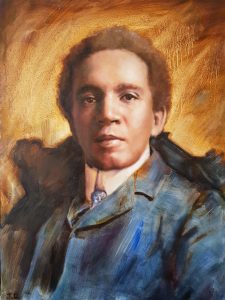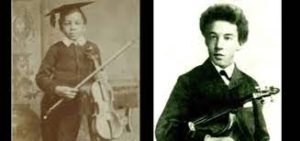PRE-TERM NEWSLETTER 1st JANUARY 2024
HAPPY NEW YEAR EVERYONE!
Next Tuesday, 9th January, we start work on the Stanford Centenary Celebration consisting of these works: (with You Tube links)
Stanford – Te Deum in B flat https://youtu.be/mbaz9T-RW-M
Stanford – O for a closer walk with God https://youtu.be/B2v_SR1wNRo
Stanford – Songs of the Fleet
https://youtu.be/WFfOI3tYB7s?list=OLAK5uy_lTNZnmFvfLiaqJZ6kWvIt5mN5wAYjoTzk
- Sailing at Dawn https://youtu.be/WFfOI3tYB7s
- The Song of the Sou-Wester https://youtu.be/WFfOI3tYB7s
- The Middle Watch https://youtu.be/i8Ku12C_oiw
- The Little Admiral https://youtu.be/SP5guiXjnQs
- Farewell https://youtu.be/Yev3L3hdFGc
INTERVAL
Parry – Blest pair of Sirens (4-part version) https://youtu.be/ZXyDZgGRhaE
Coleridge Taylor – By the waters of Babylon https://youtu.be/L_CLRWQ381Y
Vaughan Williams – Five Mystical Songs https://www.youtube.com/watch?v=huch5jFzsls
- Easter https://youtu.be/huch5jFzsls
- I Got Me Flowers https://youtu.be/eGfspIG-5to
- Love Bade Me Welcome https://youtu.be/Xn9vo82lXh4
- The Call https://youtu.be/L9nel9LeeQg
- Antiphon https://youtu.be/f8QuDurvSFg
Unfortunately, none of these works is on Cyberbass but you can save a pdf of the above list with links here: SCC You Tube links to use for private practice during the term.
These pieces are in a prepared booklet (price £3 each) except for Songs of the Fleet and Five Mystical Songs which have been hired from the Library. Please arrive early on Tuesday with the right money.
ARE YOU WITH US?
Attached is a Membership List of those members we think, and hope, will be singing with us this term. Please check your name and, if your entry is incorrect or missing, email timp470@btinternet.com
Thank you.
SAMUEL COLERIDGE-TAYLOR (1875-1912)
Samuel Coleridge-Taylor was born London to Alice Martin, an Englishwoman, and Daniel Peter Hughes Taylor from Sierra Leone who had studied medicine in London and later became an administrator in West Africa. They were not married, and Taylor had returned to Africa without learning that Alice was pregnant. Alice named her son Samuel Coleridge Taylor (without a hyphen), after the poet Samuel Taylor Coleridge. (He later used the name “Samuel Coleridge-Taylor”, with a hyphen, said to be following a printer’s error.)
There were numerous musicians on Taylor’s mother’s side, and her father taught the violin to his grandson from an early age. Taylor’s musical ability quickly became apparent, and his grandfather paid for him to have violin lessons. The extended family arranged for Taylor to study at the Royal College of Music from the age of 15 where he was known as the student with a large patch on his trousers. He was persuaded to change from the violin to study composition by Stanford who continued to mentor him.
Not long after completing his degree, he was appointed a professor at the Crystal Palace School of Music and began conducting the orchestra at the Croydon Conservatoire.
He married Jessie Walmisley, a fellow RCM student from a musical family and both their children had musical careers. Their son, Hiawatha, adapted his father’s music for a variety of performances. Their daughter, Avril, became a composer-conductor.
Taylor made three tours of the United States in the early 1900s achieving such success that he was referred to as the “African Mahler“.
He was particularly known for his three cantatas on the poem about Native Americans: The Song of Hiawatha by, Henry Longfellow. Coleridge-Taylor premiered the first section in 1898, when he was 22. They were frequently performed by English choral societies between the wars but are now sadly out of fashion*.
Edward Elgar was an early champion of Coleridge-Taylor. With his friend, August Jaeger at Novellos, in 1898 he persuaded Secretary of the Gloucester Three Choirs Festival, Herbert Brewer, to invite Taylor to conduct the premiere of his own Ballade in A minor which he did, to much acclaim.
August Jaeger (aka ‘Nimrod’)
From 1903 until his death in 1912, Coleridge-Taylor was a professor of composition at the Trinity College of Music and Guildhall School of Music as well as conducting several choral societies and provincial orchestras.
At that time, composers were paid little for their works and less well-off ones, like Coleridge-Taylor, often sold works outright to pay today’s bills. He sold Hiawatha’s Wedding Feast for 15 guineas and received no further payment though it sold hundreds of thousands of copies. Though he wrote many serious works he nevertheless had to knock out music hall songs to feed the family.
Samuel Coleridge-Taylor died of pneumonia on 1st September 1912 in Croydon aged 37. It is thought that overwork and financial struggles contributed to his early death.
He left a legacy of orchestral and chamber music and a recently discovered opera, as well as vocal works often with an ethnic slant.
Carleton has picked out for us a beautiful example of his several religious compositions: https://youtu.be/L_CLRWQ381Y
Jessie with Avril and Hiawatha
His early death left Jessie and the children in poverty. Such was the reputation of the young composer that King George V granted Jessie an annual pension of £100. Jaeger also arranged for Novellos to pay her an allowance as belated royalties for the Hiawatha cantatas. In 1912 a memorial concert was held at the Royal Albert Hall which raised over £1400 for the composer’s family
Elgar and Jaeger and other musicians campaigned for royalties to be paid to the dependants of composers, leading to the formation of the Performing Right Society which we might thus regard as another of Samuel Coleridge-Taylor’s legacies.
*POSTSCRIPT
Some years ago, Lorna and I enjoyed singing Hiawatha’s Wedding Feast and Hiawatha’s Departure with another society. The words and music were certainly ‘different’!
Here’s a bit of Longfellow’s verse describing the dancer, Pau-Puk-Kewiss at the Wedding Feast.
For the women and the maidens
Loved the handsome Pau-Puk-Kewiss.
He was dressed in shirt of doe-skin,
White and soft, and fringed with ermine,
All inwrought with beads of wampum;
He was dressed in deer-skin leggings,
Fringed with hedgehog quills and ermine.
No doubt the hedgehog quills in his leggings enhanced his athletic dancing performance!
Tim
AND FINALLY . . .








